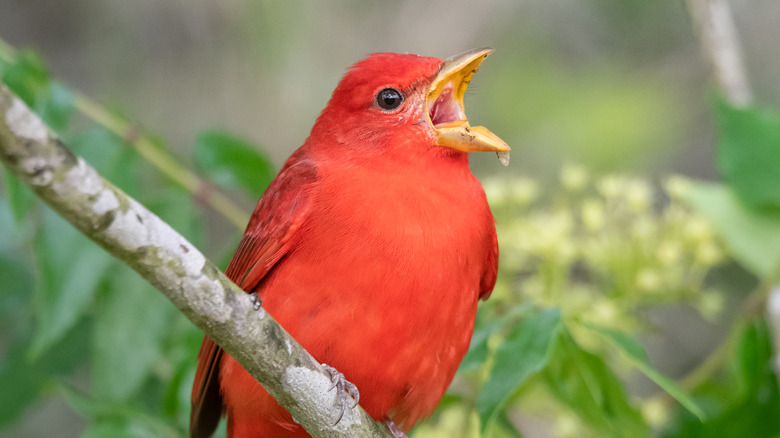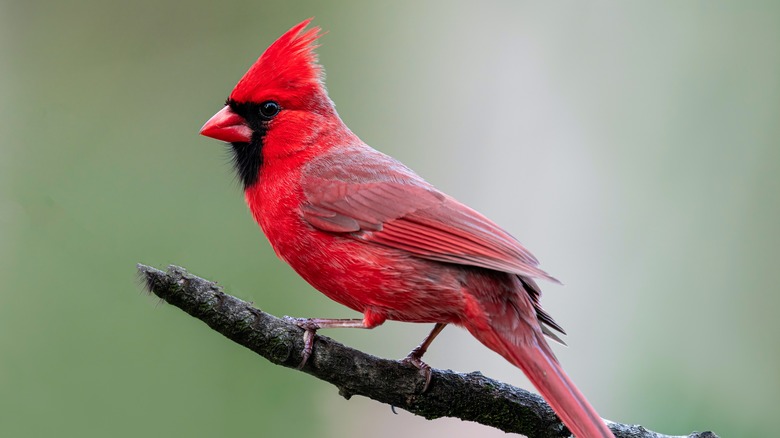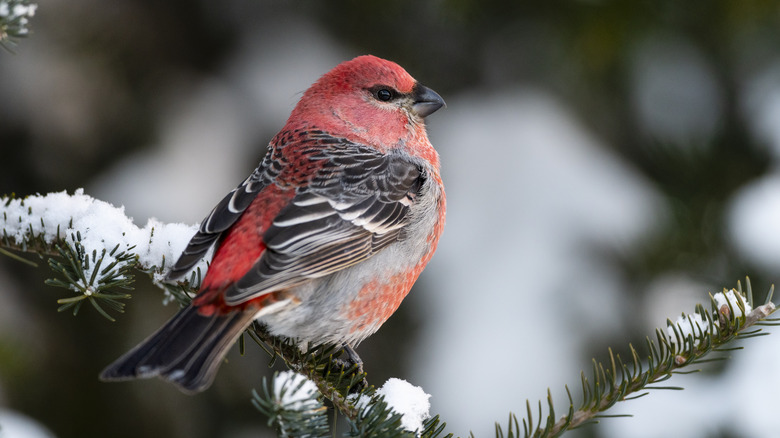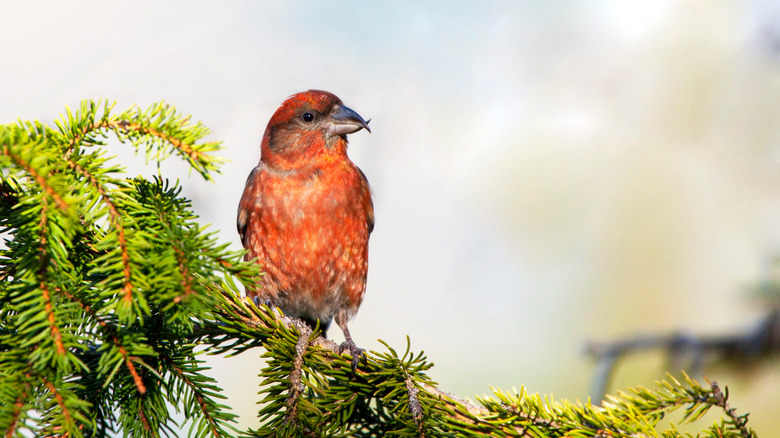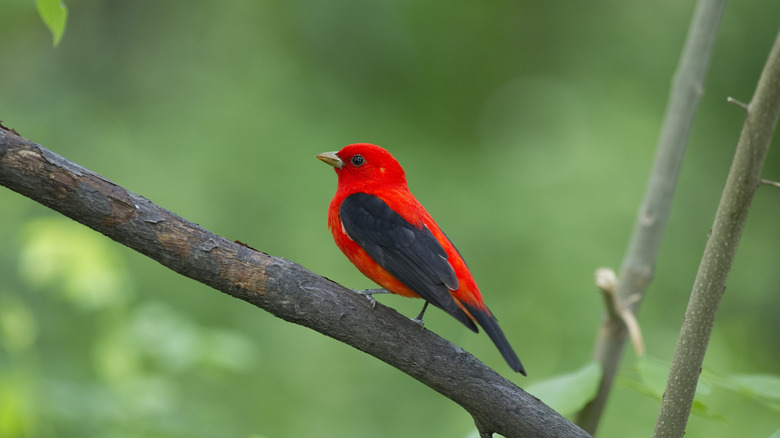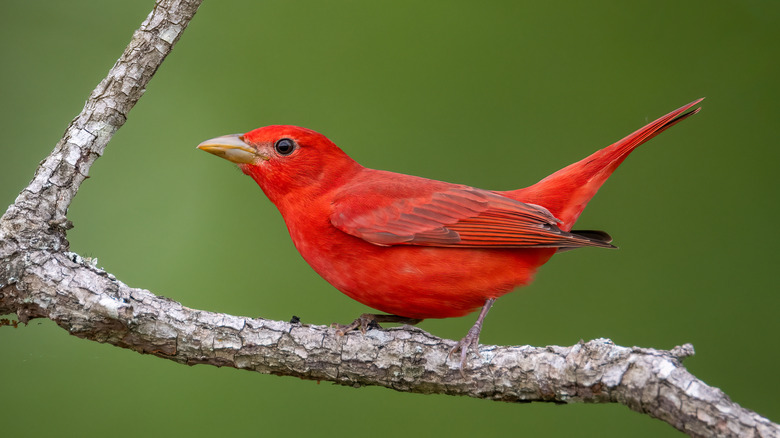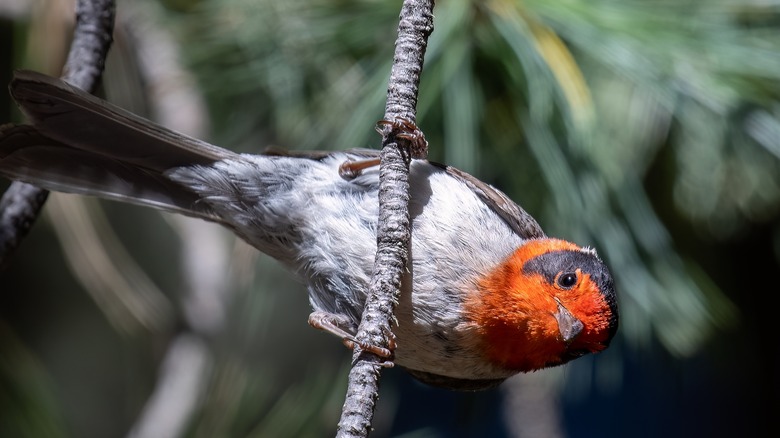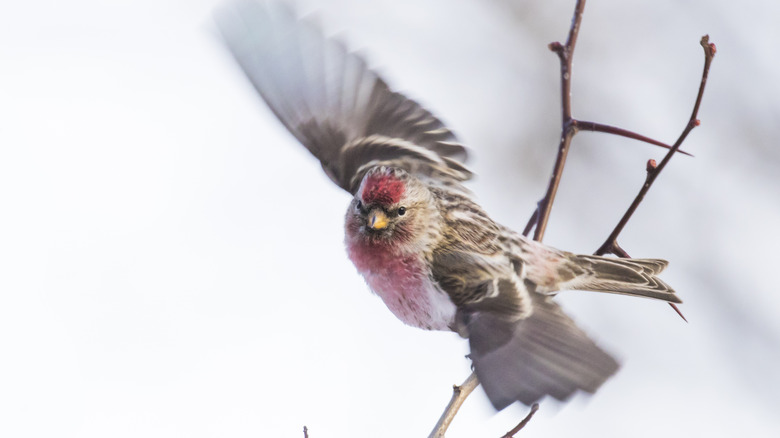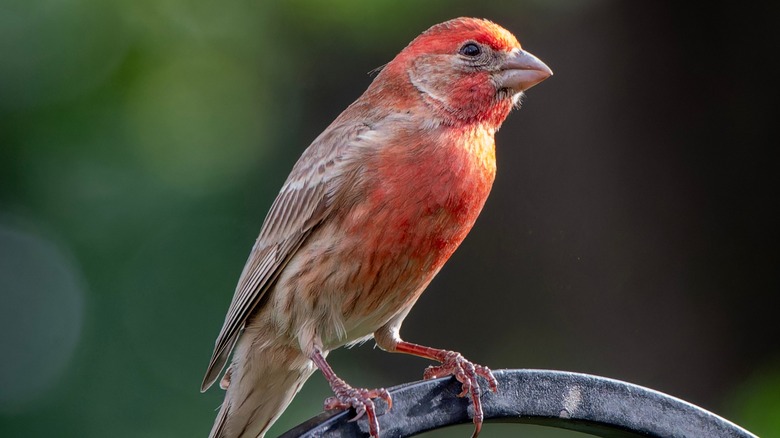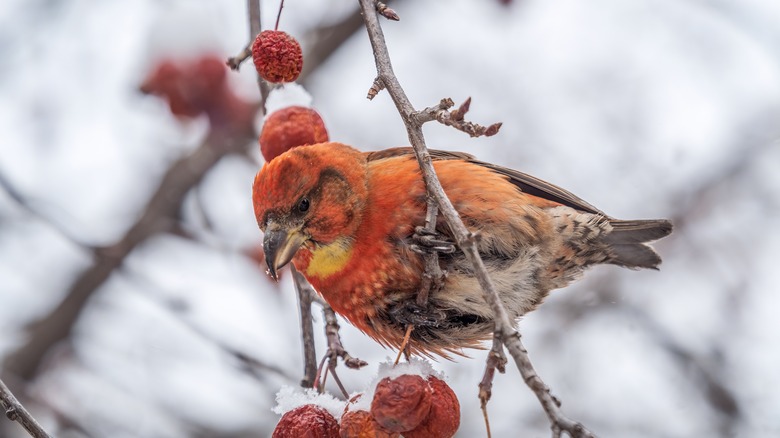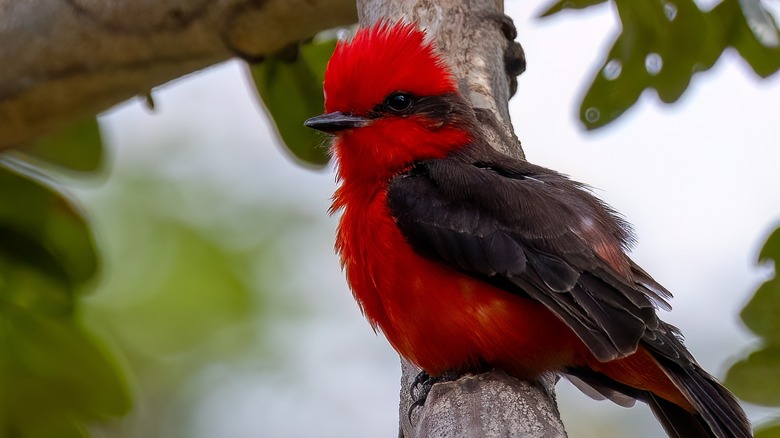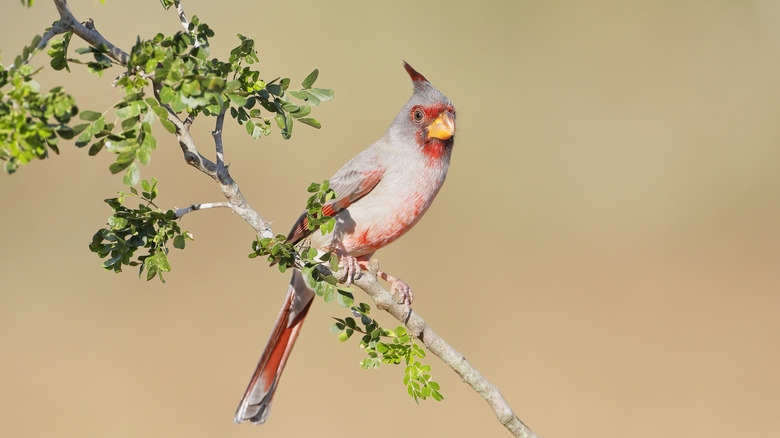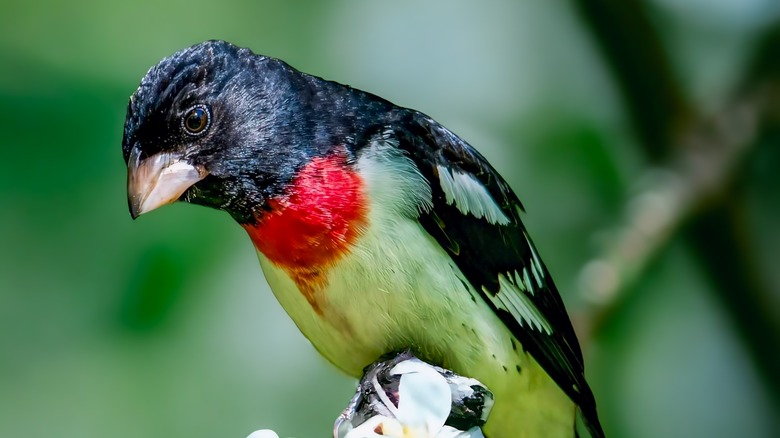12 Fiery Red Birds You Might Be Seeing Around Your Yard & Garden
Wondering which feathered friends have been visiting your backyard bird feeder? There are many scarlet-colored birds that you may be seeing, ranging from beautiful songbirds to cousins of the northern cardinal. If you're eager to identify the fiery red visitors in your yard and garden, we've created a guide that will help you do just that. From scarlet tanagers to vermillion flycatchers to red-faced warblers, there are so many to see. Grab your camera and prepare to snap some photos, so you can figure out which red-feathered beauties are frequenting your feeder.
All of these birds are at least part-time residents of North America, but some are very particular about the habitats they settle in. Residents of southwestern states may be fortunate enough to spot the more exotic birds on this list, but there are plenty of stunning crimson birds to see in other parts of the continent as well. Without further delay, let's take a look at some of the most notable beautiful red birds that you might see soaring around your home.
1. Northern cardinal
When it comes to common red colored birds, few are as recognizable as the stunning northern cardinal. Native to many parts of North America, this bird can be found in both urban environments and secluded forests. Male cardinals have striking bright red bodies and feathered tufts on their heads. Northern cardinals are not deterred by cold weather, so you may spot them in your yard even in the winter. If you wish to see more of them around, you can attract cardinals to your garden by planting greenery that they love.
2. Pine grosbeak
Found in forested regions of North America, pine grosbeaks are round red-colored birds that are part of the finch family. These birds are larger than they appear to be in photos; in fact, they make other finches look small. They also tend to move slower than other birds, making them easy to observe in trees. Unlike cardinals, pine grosbeaks have patches of red plumage and gray wings with white markings. They are spotted year-round in most of Canada and many parts of the U.S., except for the southern states.
3. White winged crossbill
Keep your eyes peeled for the white winged crossbill in the spring and summertime. In the warmer months, the males molt their feathers and transform into gorgeous shades of red. White winged crossbills are found in North America and throughout Europe. They typically frequent forests, but can also be found in parks and backyard feeders, especially if there are spruce trees present. They travel in big flocks, which are fun to observe, as these birds love to chatter and hang upside down in the trees. Their name comes from their distinctive crossed beak.
4. Scarlet tanager
Arguably one of the prettiest red birds on our list, scarlet tanagers are characterized by their stunning scarlet plumage contrasted with their black wingspan and tail feathers. They flock south in the winter and head to the eastern U.S. and southeastern Canada in the summer months to breed. Scarlet tanagers have a sweet tooth and are known to feast on wild berries. These birds are about the same size as robins and produce a similar call. You just may need your binoculars to spot them, as they love to hangout in the treetops.
5. Summer tanager
Like scarlet tanagers, summer tanagers are known for their breathtaking appearance. According to Cornell University's Cornell Lab of Ornithology, male scarlet tanagers are the only birds in North America that are completely red all the way through. Another fascinating fact about them is that they are a wasp-eating bird. They catch wasps and bees in their beaks and remove the stinger on a branch before popping them in their mouths. They migrate down to South America and return to the southern and eastern U.S. to breed, where they prefer to hang out in oak trees.
6. Red-faced warbler
Residents of Mexico, as well as Arizona and New Mexico, may be lucky enough to spot the beautiful red-faced warbler around their homes. These birds have distinct red faces and black crescent on their heads, grayish bellies and dark gray wings. They tend to frequent mature forests at high elevations, and sadly, their habitat is under threat due to logging. Catch them migrating to the tropics from mid-September to April and returning to the U.S. for breeding. They are known to nest on the ground and forage high up in the trees.
7. Common redpoll
Common redpolls may be little, but they are resilient creatures. They can withstand freezing winter temperatures and are found across Canada and most of the northern and central U.S. They travel in flocks and have bright red markings on their heads that make them easy to recognize. Male common redpolls also have reddish plumage on their bellies. These birds love to visit feeders, so there is a good chance you will spot a group of them in your yard sometime. At night, they are known to dig deep tunnels into the snow for shelter.
8. House finch
You have likely seen these rose-colored birds in your yard and neighborhood parks. Their song is recognizable and is especially loud when they gather in large flocks, usually in trees and shrubs. Although house finches are not nearly as crimson-colored as other birds on this list, the males are dappled in a reddish shade that makes them easy to spot. Depending on their food source, some male house finches will appear more red than others. They love to visit feeders and hang out in trees at parks and in urban areas.
9. Red crossbill
These unique birds are found all over North America. Male red crossbills have red plumage and darker reddish wings. They are known to travel far and wide across the continent, frequenting conifer forests, parks, and feeders. Not all red crossbills are the same — experts now estimate that there are eight different species of this bird. Each species has a different size, diet, behavior pattern, and song. Scientists and bird enthusiasts are fascinated by red crossbills for this reason. Keep an eye out for these birds and you may be able to spot the differences between the species.
10. Vermilion flycatcher
These gorgeous red and dark gray birds are most common in the southwestern U.S., as well as Central and South America. However, they are capable of wandering and have been spotted up in Minnesota, Maryland, and even British Columbia. Male vermilion flycatchers have fiery red plumage and feathered tufts on their heads. They are small but fierce predators, waiting on the tops of fences and shrubs to pounce on flying insects as they pass by. It's a bird you will want in your yard if you're looking for a natural insect control solution.
11. Pyrrhuloxia
These desert-dwelling birds are a cousin of northern cardinals and are also known as "desert cardinals." They look somewhat the same and produce a similar sound. Unlike cardinals, pyrrhuloxias have swatches of red on their faces, wings, and bellies. If you put sunflower seeds into your feeder, you will likely spot them visiting your yard in search of food. Residents of the southwestern U.S., where deserts and mesquites are part of the landscape, may be lucky enough to spot these birds. On hot days, you may even find them trying to enjoy your air conditioning next to your patio door.
12. Rose-breasted grosbeak
Male rose-breasted grosbeaks are characterized by the spot on their chest that resembles a bright red rose petal. They are found in forests, woodland landscapes, and backyard feeders all over the eastern and central U.S. and across Canada, from the Atlantic provinces into British Columbia. They migrate south to Central and South America. Stock your feeder with peanuts, sunflower seeds, and safflower seeds, and wait for these unique-looking birds to visit your yard. They have a beautiful song that sounds similar to the American robin, but even sweeter.
